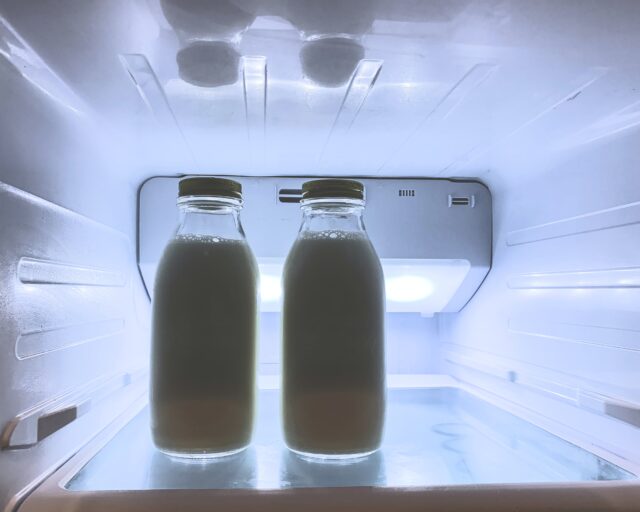
Introduction
Milk is widely considered the most perfect food because of its balanced availability of protein, fat, carbohydrates, vitamins, and minerals, and its high content of essential nutrients such as calcium, essential amino acids, and essential fatty acids. Concentrating these nutrients through processing further enhances the nutritional value of milk and its by-products. For example, the cheese-making process concentrates the protein and fat, reduces the water, and eliminates the carbohydrate component. The whey derived from cheese making can be further processed through a technique called ultrafiltration to concentrate the alpha-lactalbumin and beta-lactoglobulin, proteins of high nutritional value.
Altering the carbohydrates in dairy products
Lactose is the primary carbohydrate in milk. Many dairy products (for example, yogurt and sour cream) are manufactured via fermentative processes that reduce lactose and can be consumed by lactose-tolerant people. In these cases, the fermentative process converts the lactose to lactic acid, an element digestible by almost everyone. In addition, yogurt has been shown to contain an inactive form of lactase (the enzyme which breaks down lactose), which is activated in the neutral pH environment of the small intestine (Kolars et al., 1984).
Altering the fat in dairy products
Milk fat is a rich source of essential fatty acids and possesses a uniquely pleasing flavor found in no other fat. It contains a higher proportion of short-chain fatty acids than other fats, which contributes to its ease of digestibility. But in the negative side, its high melting range makes butter chilled to below 15ºC hard to spread and unsuitable for use in bakery products. If the dairy industry is to achieve any success in utilizing its abundant milk fat, technological modifications will have to be undertaken to improve milk fat’s utility as a food ingredient of choice. In terms of surplus butter fat, it would be both practical and profitable to extract butter flavor and concentrate it. This product could then be used in pastries, cooking oils, bread, edible creams, and imitation dairy products (Kinsella, 1975).

Altering the cholesterol in dairy products
The concentration of cholesterol in bovine milk ranges from 10 to 15 mg/100 ml. In milk, 95 percent of the cholesterol in milk was unesterified; the remainder was esterified to long-chain, usually saturated, fatty acids. A hypothesis exists that the cholesterol re-educated from Eubacterium species can be used to convert the cholesterol in fluid milk to products that are either poorly absorbed or completely unabsorbed in the human intestine and that will therefore be excreted. Furthermore, a lesser amount of cholesterol would be available in the intestine for oxidation to compounds that are potentially carcinogenic. Products from the chemical reduction of cholesterol are not carcinogenic. Conversion of cholesterol to chemically reduced and poorly absorbed compounds should therefore decrease the concerns of cholesterol-conscious people about consuming milk and other dairy products.
Supercritical fluid extraction (SFE) is a state-of-the-art unit operation that exploits the dissolving power of supercritical fluids at temperatures and pressures above their critical values. It involves the use of a gas elevated above its critical pressure and temperature as a solvent for selected components of a solid or liquid mixture. Under supercritical conditions, the solvent displays an increase in density, approaching that of a liquid, but retains the diffusivity associated with gas. These properties allow a supercritical fluid to penetrate the structure of a material to be separated, dissolve soluble components, and carry them out of the extraction vessel. The extract can be easily recovered from the solvent by manipulation of pressure and/or temperature conditions such that they become insoluble and precipitate out of the solution. The solvent can be vented off or recalculated through the extraction vessel. A number of advantages have been cited for SFE compared with conventional extraction techniques currently used in the food industry. These include reduced energy costs, higher yields, better quality products owing to lower operating temperatures, and elimination of explosive or toxic solvents. It is anticipated that the use of supercritical fluid extraction and its range of applications will continue to grow during the coming years.
To effectively remove the cholesterol from the milk lipid system, the fat globule must be penetrated, since it contains the largest deposit of cholesterol in milk. However, the cholesterol must be removed from the fat globule without destroying any of the globule’s ability to function. Therefore, a crucial factor affecting the ability of the supercritical fluid to extract the lipids from the fat globule is the status of the fat globular membrane.

Altering the trace elements in dairy products
Unfortified milk and formulas are poor sources of iron. However, the percentage of iron absorbed by infants varies widely with the source. About 50 percent of the iron in breast milk is absorbed compared to 10 to 12 percent for cow’s milk or formula (Dallman et al., 1980). Fortification of cow’s milk with iron sulfate or iron gluconate increases the total iron assimilated. Prolonged breast-feeding protects against iron deficiency; fortified cow’s milk or infant formulas are also effective. The total amount of iron absorbed from fortified cow’s milk can be four times that absorbed from breast milk.
Fortification must use chelated forms of the metals to ensure initial transfer to the phosphoserine groups of casein; this ligand exchange reaction removes the metals from the reactive environment of milk lipids and ensures more effective utilization. The opportunity to fortify it with several essential trace elements gives us the chance to make it even more nourishing, particularly for infants, children, adolescents, and pregnant women who are at risk of iron and other trace metal deficiencies.
Ultrafiltration
Ultrafiltration is a high-pressure microfiltration process that selectively segregates components of various molecular weights. For milk processing, membranes with varying pore sizes are used to retain the fat and protein while allowing the lactose, water, and salts to pass through. Examples include the concentration of whey proteins, the manufacture of cheese base for processing, and the concentration of total milk proteins and fat for the manufacture of all cheese varieties.
The application of heat during milk or product processing can be helpful or harmful. On one hand, heating reduces microbial loads and eliminates pathogens; it also denatures milk proteins to create specific properties, such as the melting of components in cheese processing to create a homogeneous mass. On the other hand, heating destroys, through protein denaturation, valuable components such as immunoglobulins, enzymes such as lactoperoxidase, and vitamin activity.
Multiple processing techniques can be applied to prevent or reduce the destructive effects of heat. For instance, in dealing with a heat-sensitive element for which preservation is necessary, such techniques can be used as freeze-drying freeze concentration, ultrafiltration, or reverse osmosis; or microfiltration or irradiation. Simply reducing heat to reduce bacterial loads can also be effective; of course, the heat level must be high enough to eliminate pathogens but not so high as to affect the desired elements.
Conclusions
By processing of dairy milk, it will improve the nutritional value of milk and quality of bi-product by preventing the spreading of fat. It also increase digestibility and supports gut microbial flora with better absorption. Thereafter it all improves the health of consumers by consuming the processed dairy milk product. By product is also a solution for lactose intolerance peoples. If any dairy form makes many byproducts from milk then the demand will increase and also helpful for increase of farmers income.
Also, read | Importance of Hygiene in the Dairy Industry
Authors:

Ankita patel*1, Saurabh Pratap Singh1, Himanshu Garg, Naitam Shubham Devidas1, Vaibhav Patel2 and Vinod kumar3
MVSc Scholar1 and Professor and Head3, Dept. of Animal Nutrition, College of Veterinary Science and Animal Husbandry, DUVASU, Mathura-281001
MVSc Scholar, Division of Animal Genetics and Breeding, NDRI Karnal- 132001 *Corresponding Author mail id- ankita2508patel@gmail.com

















